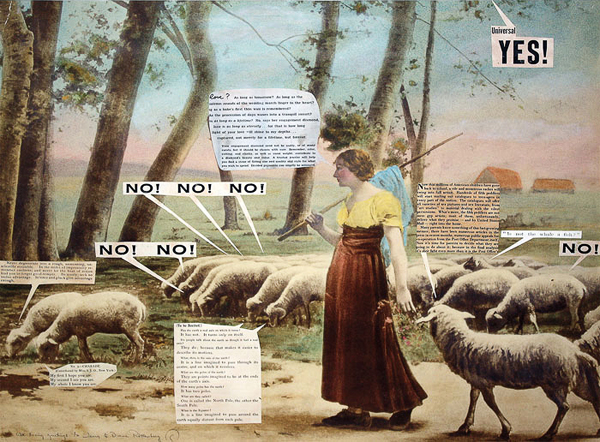
Up next in our series of interviews with notable, in-the-know locals: Stephen Eisenman, professor of Art History at Northwestern and curator of William Blake and the Age of Aquarius, which runs through March 11 at the Block Museum of Art.
How did you put together this exhibition?
I found myself one year teaching Blake. I had always found him difficult, so in that one year I made an extra effort and read more, and thought more, and thought, Gee, it’d be nice to do an exhibition about Blake. I also noticed that the time we were thinking about for the exhibition coincided with the fiftieth anniversary of the Summer of Love—2017 and 1967. That’s perfect, because the great efflorescence of interest in Blake in the United States came in the ’60s. You can find the ideas of the summer of love in Blake almost 200 years earlier—peace, love, rejection of oppressive individualism, rejection of war, rejection of hyper rationalism, legalism, the military industrial complex.
Explain the setup of the exhibition.
The first gallery is a big immersion in original works by Blake, and then we take the visitor in basically chronological order. The rooms are darkened, we have benches, and we have beanbags for people to sit in and listen to music. There’s a terrific liquid light show that goes with the music. We’re not handing out marijuana joints, but if anyone comes stoned, they won’t be turned away.
What did the artists of the 1960s find in Blake’s work?
Blake’s art is fantastic, dreamlike, visionary. It often has monsters in it. He’s celebrated for his imagination above all other senses. He thought that the five senses were kind of a straitjacket—there is no real distinction between humans and nature in that way. That the distinction between humans and nature has been destructive, in that it’s allowed us to try to conquer nature without realizing we’re a part of it.
Poets like Ginsberg and the other Beats, and musicians like Jimi Hendrix and the Doors, also wanted to break through that control of the senses. They would do so in a number of—by drugs, by taking LSD or mescaline and having trips and visions. They could do it through Buddhist meditation or other kinds of Hare Krishna meditations. There are all kinds of ways of escaping the limitations of one’s own enclosed space. Blake celebrated that idea, and he produced works of art that tried to give concrete representations of that.
Do you think he also offered a political model for that generation, or one that can be translated to today?
You can see why this would be a very subversive thing in the sixties. For example, you’re trying to get legions of young men to register for the draft, and go up and fight in Vietnam. Instead, those people were doing drugs and rejecting imperialism. They’re not likely to join up. Communities of young men and women were encouraged to join the ranks of business, and to produce goods for profit, and to destroy the environment. And instead they feel like they’re a part of the environment, and that the whole profit system is a system of exploitation and of greed.
Blake has something to offer every group of people who stand opposed to prevailing wisdom, logic, order, politics. Right now, when the necessary word for every thinking person is “resistance,” he offers models of resistance. He was actually charged with sedition for assaulting a soldier and for insulting the king. His idea about the unity of humans and nature is particularly worthwhile. If we don’t learn that lesson soon, we’ll destroy the whole planet. Young people are fucked. I’ll be dead by then, but our children’s children will be screwed.


